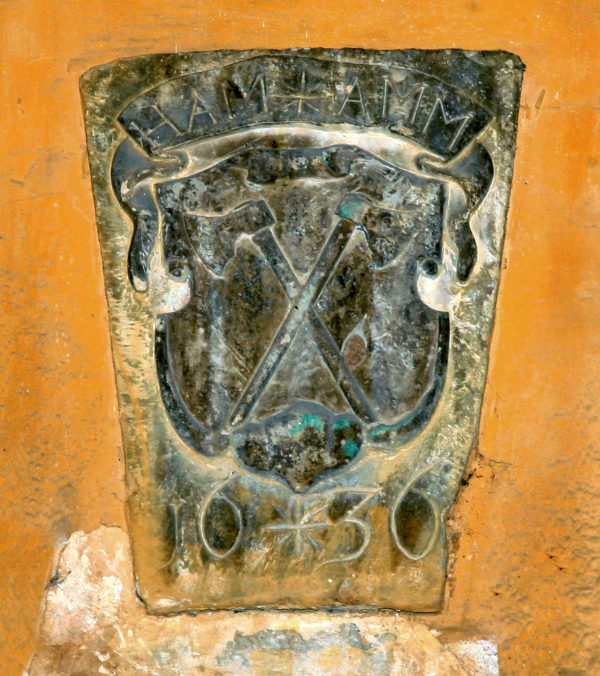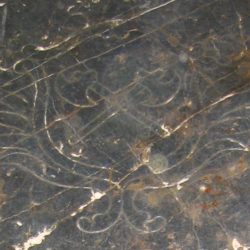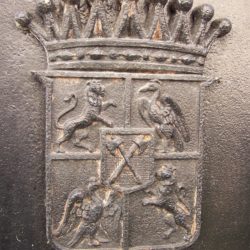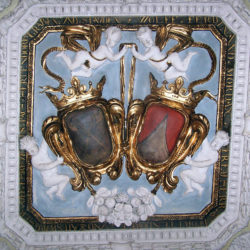
Coat of arms of the Mordax family in Grm Castle
NOVO MESTO, GRM CASTLE
Location of the coat of arms: façade
“And the Porttendorff family has the liberty and right, for as long as the duke rules from his chair, to set fires across the land, whenever necessary and to all who fail to pay their dues. Now that all the Porttendorffs have met their deaths, the Mordaxes have inherited and received the confirmation for such a freedom and right.” So reads the description of a fragment related to installing the dukes of Carinthia, written by the Carinthian parish priest Jakob Unrest at the end of the fifteenth century. Today, it is known that the violent image of the “arsonist” feudal practice or office is a distorted depiction of the ancient ritual in which privileged peasants (Sln. kosezi) lit fires to honor the newly installed duke. However, the legend clearly being far more interesting than the truth, the nobility long continued to cultivate the myth about the Mordaxes’ violent history. That was, not least of all, also suggested by their family name and the so-called talking coat of arms displaying a pair of (deadly) axes (Germ. (mord) Axt).
Originally serving as ministeriales of the Pfannberg family in Carinthia, the Mordaxes first appeared in written sources at the end of the thirteenth century. About a hundred years later, they were enfeoffed the village of Bach northeast of Feldkirchen, and an even more important acquisition was the inheritance after the extinct Porttendorffs, who had their seat in modern Sankt Thomas am Zeiselberg northeast of Klagenfurt (Katharina, the last of the Porttendorffs, purchased the manor at Porttendorff and the above-mentioned office of hereditary arsonists in Carinthia for her husband Martin Mordax). In the seventeenth century, both estates passed into their baronial predicate, and they frequently presented themselves with the double name Mordax-Porttendorff.
In the sixteenth century, the Mordaxes also settled in Carniola, where they owned the seigniory of Graben in Ragovo near Novo Mesto. In the 1580s, Christoph Mordax erected a new building nearby—today’s Grm Castle, which remained in the family’s possession for 150 years. Initially, Grm Castle was a modest ground-floor building with a tower that Christoph’s son Johann Andreus raised by adding another floor. The memory of it is still maintained by the Mordaxes’ heraldic plaque featuring a pair of crossed axes, the year 1636, and the monograms H[ans] A[ndreas] M[ordax] and A[nna] M[aria] M[ordax] (née Jurič/Juritsch), built into the wall of the castle’s inner courtyard.
Sources:
Barbo, Robert: Bela krogla. Ljubljana, 1935, p. 215.
Grafenauer, Bogo: Ustoličevanje koroških vojvod in država karantanskih Slovencev. Ljubljana, 1952, p. 137.
Kohla, Franz Xaver & Metnitz, Gustav Adolf & Moro, Gotbert: Kärntner Burgenkunde. Ergebnisse und Hinweise in Übersicht. 1. Teil (pp. 18, 250); 2. Teil (pp. 7, 120). Klagenfurt, 1973.
Stopar, Ivan: Grajske stavbe v osrednji Sloveniji. Dolenjska – prva knjiga. Porečje Krke. Ljubljana: Viharnik, 2001, p. 75.



